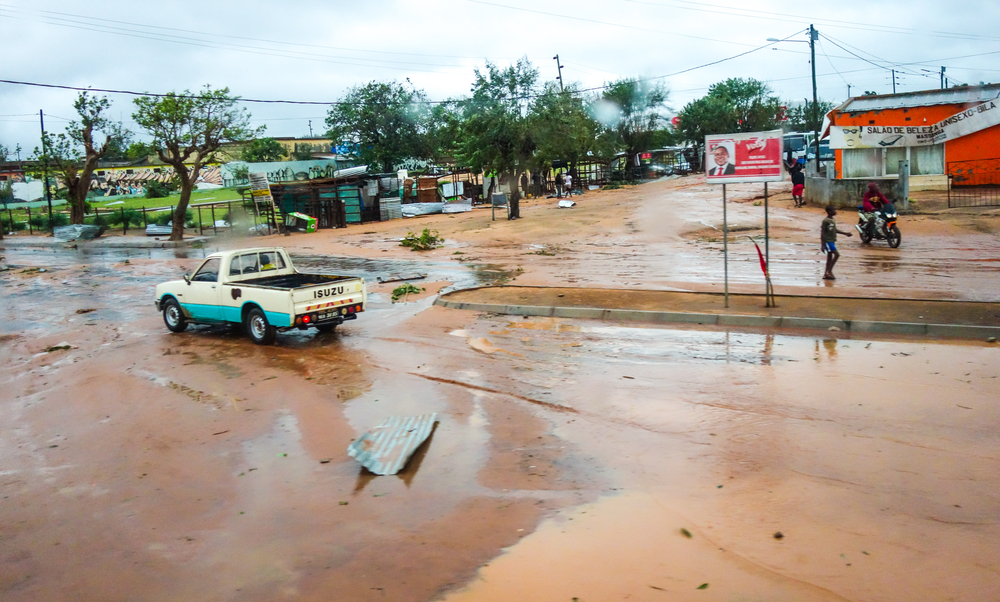WILL CLIMATE CHANGE CREATE DEADLIER TROPICAL STORMS?
By Ryan Johnson
New research suggests that, due to global warming, storm-related deaths in developing nations could increase by as much as 52 percent.
Weeks after the deadly cyclone Idai tore through Malawi, Zimbabwe, and Mozambique, the human toll is still being tallied. Entire communities remain submerged, more than a thousand people lost their lives—more than 600 where the storm hit hardest in the coastal Mozambican city of Beira—and outbreaks of cholera continue to deliver fresh misery to hundreds of families. With more than 3 million people’s livelihoods affected so far, the tropical cyclone is one of the most devastatingto ever batter the Southern Hemisphere. But is this just more of what we can expect as climates warm? A new study suggests Cyclone Idai may well be the future, as tropical storms potentially become deadlier due to worsening climate change.
“Cyclone Idai is another tragic example of the destructive potential of windstorms. These disasters can be particularly devastating in developing countries, where infrastructure and state capacity are weakest,” says Todd Pugatch, an associate professor of economics at Oregon State University, and author of the new research published in the journal World Development.
Tropical storms start when frenzied high-speed winds and moisture swirl around low-pressure air pockets above hot ocean waters. What these storms are called depends on where they form: hurricanes over the North Atlantic and Northeast Pacific, cyclones over the South Pacific and Indian Ocean.
Already, these ocean-borne storms wreak untold misery when they slam into land. But according to Pugatch’s research, under global warming they are only likely to become deadlier for people in developing nations, with storm-related deaths increasing by perhaps as much as 52 percent.
To explore the link between storm-related mortalities and climate change, Pugatch combined future predictions of storm patterns from existing climate change models with his own forecasts of human death tolls. These he inferred from 22 years of historic death records across Mexico, a developing country that stands out for its high-quality record keeping.
“I didn’t use government or media reports of [storm-related] deaths because these can be biased, either to attract additional aid flows or to make authorities appear more competent,” Pugatch says.
Instead, he looked back at monthly weather data between 1990 and 2011 to quantify how storm severity varied over time across Mexico. Wherever monthly recorded deaths went above historical norms for a given Mexican state, his model attributed these extra deaths to storms.
In total, Pugatch estimates that 1,598 deaths were caused by storms in Mexico across the 22 years in the study period—around 600 deaths more than were reported by the International Disaster Database over the same time frame. Whether scientists or development agencies can blame a storm for a particular death is not always a straightforward issue. Pugatch says he believes the discrepancy between his and previous mortality estimates may be because others fail to account for deaths caused by smaller storms, or for indirect deaths, such as those caused when storms worsen pre-existing medical conditions.
Yet in five out of six simulated climate change scenarios, the number of storm-related deaths would have been greater still. According to Pugatch’s models, the most devastating loss of life would be caused if windspeeds became 10 percent more severe without any change in historic storm frequencies—a climate scenario that would have killed 832 additional people in Mexico between 1990 and 2011.
“[This] is an alarming change to be sure,” James Kossin, a climate scientist at the National Oceanic and Atmospheric Administration (NOAA), said of Pugatch’s results. “Quantifying the linkages between the possible future changes in hurricane frequency and intensity and mortality rates is essential and this work makes good progress towards this goal.”
Kossin, who was not involved in this particular study, has carried out considerable research exploring how tropical cyclones will respond to climate change. His work has shown that cyclones have already started slowing down in response to global warming, dumping more rainfall as they go and spending longer battering buildings with strong winds, drawing out a tropical storm’s devastation and destruction.
“All of the hazards that come along with hurricanes will last longer if they move more slowly, and that’s not a good thing,” Kossin says. “Hurricanes Harvey in Texas and Florence in North Carolina, and most recently Cyclone Idai in Mozambique were all slow movers and they caused devastating record flooding because of this.”
How else cyclones will respond to climate change is less clear. Scientists are confident that sea level rises will exacerbate flooding caused by storm surges, and that tropical cyclone rainfall rates will increase as climates warm because of more evaporated seawater in the atmosphere.
“We are a little less confident that hurricane intensities are going to increase, and the expected size of that is relatively modest,” says hurricane expert Tom Knutson from NOAA, adding that a temperature increase of 2 degrees Celsius (3.6 degrees Fahrenheit) will probably lead to around a 5 percent increase in average hurricane intensities.
“Future changes in the frequency of tropical cyclones are much more uncertain,” Knutson says. Climate models suggest that, around the world, hurricanes may become less common with climate warming, but that the proportion of the most devastating hurricanes—those that reach category 4 or 5 in intensity—is set to increase.
By simulating mortalities across various realistic climate change scenarios, Pugatch’s estimates provide a range of storylines for how global warming could impact people’s basic ability to survive. In one of his models, storm-related deaths actually went down by 10 percent—but this would only happen if a reduction in the number of storms outweighs any increases in wind severity. In another, where storms were simulated to become just one-twentieth more severe, and without any increase in frequency, the death count would still have risen by some 400 people.

